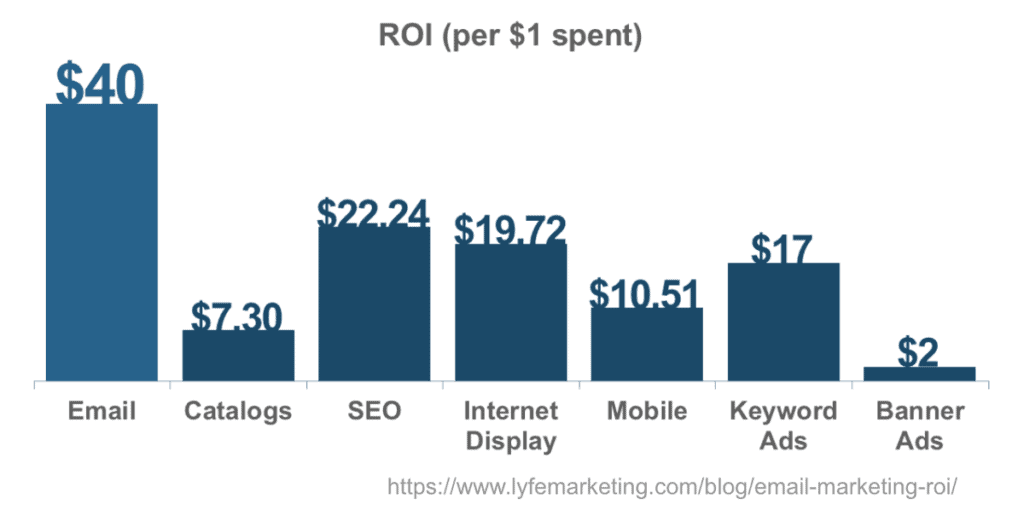The Art of Planning for Growth: Tips and Strategies
In the competitive world of business, stagnation is not an option. Growth is necessary for success, and its implementation can seem daunting – especially if you are launching a new venture or trying to revitalise an existing one. Fear not! We have researched and compiled tips to help guide your strategy towards sustainable growth.
The Small Business Administration reports that out of all newly founded businesses, only 20% remain after their first year, while half will still be in operation five years later. Don't let those odds prevent you from taking action; following these strategies could increase your chances of thriving with even greater prosperity than before!
Let's break it down into manageable pieces:
Table of Contents
Step 1: Defining Your Goals

In business, goal setting is essential to achieving lasting success. As the saying goes, “If you fail to plan, you plan to fail.” Success in a highly competitive market requires careful planning and clear objectives. Clarifying your motivations for growth should come first when setting goals – what are your hopes and ambitions? Is it financial freedom, or do you want to leave an imprint on society?
You must know why you started this journey to stay focused and work towards achieving these aims. Once you understand what drives you forward, it's time to set SMART goals – Specific (detailed), Measurable (trackable), Achievable (realistic), Relevant/Results-Focused (aligned with strategy) & Time-bound/Timely (with deadlines). For instance, if increasing sales is the aim, then lay out precise steps that need to be taken along with realistic milestones within specific timelines, which will lead to accomplishing this goal.
Entrepreneurs must also consider their target audience before launching campaigns or product development. Understanding their needs better allows tailoring strategies more effectively, resulting in improved chances of success. This helps avoid distractions from outside sources when faced with numerous opportunities by weighing each one against intended objectives so only those which align with overall strategies move ahead.
Goal setting isn't something done once but rather evolves – keeping track of progress made thus far, including successes achieved as well as learnt lessons from mistakes, helps maintain focus while being able to adjust approaches based on developments in markets or latest trends ensures staying current.
Step 2: Conducting Market Research

Market research is an essential part of planning for long-term business growth, as it entails gathering and analysing critical data better to understand the market, competitors, and customer preferences. In today's competitive landscape, comprehending the market can prove invaluable in making informed decisions to help your company remain ahead of the competition and deliver services or products that satisfy customers' needs.
An integral step in this process involves researching competitors thoroughly; by examining what they are doing well – or not – you can identify areas where your business could be improved upon while simultaneously finding ways to give yourself an edge over them through differentiation. Knowing your rivals' strategies can also provide insight into how best to position yours within the current climate.
It is also necessary to stay abreast with industry trends if you hope to find new growth opportunities; this could include changes in consumer habits or technological advances being adopted en masse by consumers on a global scale. Keeping up-to-date with relevant trends allows companies time to prepare themselves accordingly before any drastic shifts occur – futureproofing one's brand against potential challenges down the line has never been more vital than now!
Finally, gaining knowledge about customers' needs and preferences should not be overlooked either: By studying their buying patterns carefully, you may discover which factors drive people towards certain items above others – enabling firms like yours to achieve tremendous success by tailoring goods/services around these very findings in the future (surveys & focus groups come highly recommended here).
Market Research plays a crucial role when it comes to plotting out effective development plans & ensuring sustainable expansion moving forward, from keeping tabs on opponents' activity levels right down to understanding customer behaviour deep beneath its surface level – no stone should go unturned during such processes as only then will true success follow suit!
Step 3: Creating an Action Plan
Creating an action plan is a critical part of planning for business growth. It helps turn goals into reality by providing clear steps and ensuring that resources are used efficiently. An action plan allows businesses to assign tasks, monitor progress and identify potential roadblocks.
Firstly, developing a timeline is essential when crafting an effective action plan. Setting realistic deadlines and milestones gives everyone involved with the project a better understanding of their priorities and how long each task should take. This ensures that objectives are met on time without wasting valuable resources or energy trying to rush through projects at unrealistic speeds.
The next step towards achieving goals involves breaking down objectives into smaller tasks, which can be implemented more quickly than if tackled all at once from start to finish. By taking this step-by-step approach, businesses will have clarity over exactly how their plans will unfold, thus allowing them to establish success metrics throughout their journey rather than waiting until completion before evaluating performance levels against expectations set forth earlier in the process.
In addition to those two points, setting budgets and allocating necessary financial resources is critical – not only does it prevent companies from going overboard and creates accountability measures between team members. Hence, everyone knows who's responsible for what features within larger projects while remaining nimble enough to adjust appropriately if unexpected changes arise during implementation.
Finally – having flexibility built into your original plan helps ensure you don't get too bogged down by unforeseen circumstances furthering your chances for success even after initial implementation has been completed successfully.
Step 4: Investing in Your Business

Investing in your business is paramount for long-term growth and staying competitive. As a business owner, you need to pinpoint vital investment areas, search for loans, grants or investors who can offer financial support, and develop a financial plan to ensure the success of your company's future.
First off, it's essential to identify which areas demand investment most urgently and significantly. This could be investing in technology for higher efficiency; bringing on new staff members; diversifying products offered; or spending money on marketing initiatives such as advertising campaigns to increase brand visibility.
Once identified, they should be prioritised according to importance and urgency level when it comes time to make investments. The second part involves searching out potential sources from where funds may come – whether through loans from banks or other institutions, government agencies granting money via programs specifically directed towards small businesses, non-profit organisations offering aid financially speaking – even private foundations might assist too!
Additionally, there are always options like pitching potential investors who would cover expenses but receive equity stakes in return as payment instead of cash upfront.
The third point requires creating a comprehensive financial strategy looking into factors impacting its development:
- The overall strategic vision set by the owners/managers involved
- Market conditions existing at present
- Expected rate of growth over time (short & long terms)
All these three elements combined give more certainty about what steps need to be taken next while allowing necessary adjustments if required due to unforeseen changes during the execution phase.
Lastly, having team input into the process plays a vital role since collective effort leads to better understanding and results, eventually helping actualise goals quickly while minimising risks associated with any project launch / rebranding efforts etc.
Step 5: Cultivating a Strong Team

Cultivating a solid team becomes essential for success as businesses expand and develop. Investing in your staff is no longer just an advantage – it's necessary for long-term growth.
A successful team requires trustworthiness between its members; all other efforts may be futile without it. Teamwork must also be present so everyone can work together to achieve their collective goals as efficiently as possible. To ensure this occurs, managers should encourage employees to express ideas openly during meetings and provide guidance when needed while allowing them enough freedom to discover solutions on their terms.
Moreover, effective communication should be established among colleagues – whether through emails or video conferences – ensuring each member knows what is expected from them to complete tasks successfully within deadlines set by management or clients alike.
Furthermore, individual feedback will help identify each worker's strengths and weaknesses of each worker who can then lead to the development of more specific training methods tailored according to the needs of employees' knowledge base and skill set increase over time, resulting in better performance overall by the entire group collectively as well as individually speaking!
Step 6: Building an Effective Marketing Strategy

In today's dynamic marketplace, businesses must be proactive to thrive. A comprehensive marketing strategy is essential for sustained success and staying ahead of the competition. A practical approach can give your business a competitive advantage, amplify brand visibility, and help you connect with your target audience.
Let's explore how to develop an efficient marketing plan that encompasses constructing a powerful brand identity, employing social media platforms and other channels to reach customers, and leveraging email campaigns and additional tactics for growth. By carefully analysing each component of this process – from crafting key messaging points down to choosing which words will have maximum impact – you can create an exceptional rewritten piece that truly stands out!
1 – Develop a Strong Brand
A strong brand identity is at the core of any successful marketing strategy. Your brand represents your company's values, personality, and mission and is the foundation for your entire marketing strategy. To develop a strong brand, consider the following:
- Define your unique value proposition: Clearly articulate what sets your business apart from competitors and identify the fantastic benefits you offer customers.
- Create a memorable visual identity:
- Design a logo.
- Choose a colour palette.
- Select typography that reflects your brand's personality and values.
- Develop a consistent voice and messaging: Ensure that your brand communicates with customers in a consistent tone, whether it is through written content, visual elements, or customer interactions.
- Craft a compelling brand story: Share the story behind your business to create an emotional connection with customers and build a community around your brand.
2 – Use Social Media and Other Channels to Reach Customers
Social media platforms and other digital channels have become indispensable tools for businesses to engage with their target audience. To maximise your reach and impact, consider the following:
- Identify the right platforms: Research your target audience and determine which social media platforms they are most active on, ensuring that you focus your efforts on the channels with the highest potential for engagement.
- Create valuable content: Share content that educates, entertains, or inspires your audience, fostering engagement and encouraging them to share your content with their network.
- Engage with your audience: Respond promptly to comments, messages, and mentions and actively participate in conversations relevant to your industry.
- Leverage paid advertising: Use targeted advertising on social media platforms and other digital channels to reach a wider audience and drive conversions.
3 – Consider Email Marketing and Other Tactics
Email marketing and other tactics can play a significant role in driving business growth. When used effectively, these tools can help nurture relationships with existing customers, generate new leads, and boost customer retention. Consider the following:
- Build a quality email list: Offer valuable incentives, such as exclusive content, discounts, or giveaways, to encourage website visitors to subscribe to your email list.
- Segment your list: Categorise subscribers based on their preferences, behaviour, or demographics, allowing you to send targeted and personalised content that resonates with each group.
- Design engaging email campaigns: Craft compelling subject lines, visually appealing email designs, and clear calls to action to maximise open rates, click-through rates, and conversions.
- Experiment with other tactics: Explore additional marketing tactics such as influencer partnerships, content marketing, or search engine optimisation (SEO) to amplify your reach and drive growth.
Building an effective marketing strategy requires a well-rounded approach that combines developing a solid brand, leveraging social media and other channels, and utilising email marketing and other tactics. By integrating these elements into your marketing plan, you will be well-equipped to navigate the competitive landscape, reach your target audience, and drive sustainable growth for your business.
Step 7: Embracing Change and Adaptability

For businesses, change is inevitable — whether in the form of new competitors, shifting market trends, or recent technological advancements. To stay ahead of the game and keep up with these changes, businesses must embrace change and adaptability as part of their planning for growth. This means being flexible, pivoting when necessary, and having a growth mindset.
Remain flexible and open to new opportunities:
Remaining flexible and open to new opportunities is essential for any business seeking growth. This requires a willingness to try new things, experiment with different strategies, and pivot when necessary. When leaders cultivate a culture of flexibility, employees feel empowered to make decisions and take calculated risks, knowing that the organisation supports them.
To remain flexible and open, businesses must stay attuned to the external environment, pay attention to what's happening in their industry and take an agile approach to decision-making. Identifying opportunities early on and adapting quickly can set companies up for success in the long run.
Pivot when necessary:
Businesses must be prepared to pivot when things aren't working, or market conditions change. Pivoting involves shifting the focus or direction of the business to better align with new opportunities or the changing environment. This entails stepping outside the comfort zone and making tough decisions to lead the company to growth and success.
Pivoting requires courage, resilience, and overcoming past missteps or failures. It also requires a willingness to be open and transparent with critical stakeholders, including employees, customers, and investors.
Embrace a growth mindset:
Adopting a growth mindset is critical to embracing change and adaptability. Those with a growth mindset believe talents and abilities can be developed through hard work, dedication, and continuous learning. They see challenges as opportunities for growth and don't shy away from failure as an integral part of the learning process.
Cultivating a growth mindset empowers businesses to adapt and innovate in the face of challenges or obstacles. It enables companies to experiment with new approaches and strategies, takes on new challenges, and learn from setbacks.
Ultimately, embracing change and adaptability is essential for businesses looking to grow and succeed in the long run. Remaining flexible and open to new opportunities, pivoting when necessary, and embracing a growth mindset are all critical components of creating a change-ready organisational culture. With these tools, businesses can navigate the ever-changing business landscape and come ahead of the competition.
Conclusion
In pursuing sustainable expansion, it is essential to crafting a plan for growth with foresight and agility. To be successful, you must have clarity in your objectives, conduct thorough market research and make decisions based on data-backed evidence.
As you embark on this journey towards success, strive to embrace innovation while investing in team development and staying open to change as the business environment evolves. The art of planning for growth requires more than just ambition – it involves strategic decision-making considering short-term and long-term goals.
By implementing the strategies outlined here today, businesses can create a practical framework that will enable them to seize opportunities now and thrive in the times ahead.
It is also essential to take action and continually adjust tactics along the way; progress should be measured regularly against set goals so adjustments may be made accordingly if needed.
At its core, preparing for growth necessitates remaining proactive rather than reactive – understanding current trends before they become mainstream enables one's business model to stay competitive over time through continuous refinement of processes and procedures designed specifically around their needs. Doing so allows companies to build upon existing successes while mitigating associated risks via intelligent risk management solutions tailored toward each venture's unique challenges and requirements.
In short: by executing innovative plans backed up with reliable data sets gathered from meticulous research efforts – combined with unwavering dedication towards turning those plans into reality – successful enterprises can establish a legacy built on lasting success & profitable returns down the road!
